#Peter Tork and/or Release
Explore tagged Tumblr posts
Text
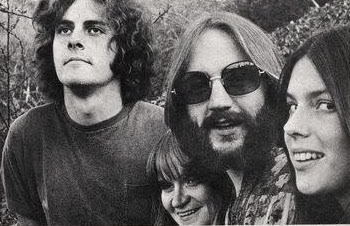
Peter Tork and/or Release, 1969.
“After quitting [The Monkees], Tork tried to launch a new band called Peter Tork and Release. The fact that he’d been in the Monkees may have made it harder to gain respect, he said, but his fame also gave him advantages over other new bands. The pluses and debits of being an ex-Monkee balanced out, Tork thinks. Release failed, he says, because ‘I didn’t know how to stick to it. I ran out of money and told the band members, “I can’t support us as a crew any more, you’ll just have to find your own way.”’ In hindsight, Tork says, he should have asked the others to help support the band and hang with it after he could no longer afford to be its sugar daddy. But at the time, Tork says, he lacked the self-esteem to ask for other people’s help.” - Los Angeles Times, October 20, 1992 “I had a group called Release, which I couldn’t keep together because I didn’t know enough about management. [We recorded] just a few basement tapes. Actually they were attic tapes.” - Peter Tork, Goldmine, May 1982 “[Judy Mayhan] had played the folk circuit and worked as a waitress at New York’s famous Gaslight Club when she met Peter Tork […], who helped her along in the business.” - The Columbia Record, December 18, 1971 “According to Judy, Peter is another one of those good guys. It seems he frequently opens his doors to needy guests.” - Star-Gazette, March 7, 1970 “That [‘Peter Percival Patterson’s Pet Pig Porky’] was taught to me by Judy Mayhan, who was a singer that I worked with and managed for a time — she had an album on Elektra. It was just a thing she had heard at a nursery school. I got credited for it [on the album] because Screen Gems never asked me who wrote it. It’s actually public domain.” - Peter Tork, Pisces, Aquarius, Capricorn & Jones Ltd. CD liner notes, 1995 “[There were recording] sessions that Peter produced himself BEFORE I got that opportunity [at Muscle Shoals Sound Studio]… and it was Peter that made that opportunity possible to begin with… He was a very important person in my life and did his best to guide me… […] Peter told me many years ago that he had no clue as to what happened to all those recordings.” - Judy Mayhan, via Forrest George on Facebook, February 21, 2019
#Peter Tork#Tork quotes#60s Tork#90s Tork#10s Tork#Judy Mayhan#Reine Stewart#Riley Cummings#Release#Peter Tork and/or Release#The Monkees#Monkees#long read#can you queue it
22 notes
·
View notes
Text

Peter Tork and Reine Stewart with members of his post-Monkees band Release, 1970
21 notes
·
View notes
Text

😉
#monkees#the monkees#michael nesmith#micky dolenz#davy jones#peter tork#pacj#pisces aquarius capricorn & jones#box set#next release#coming soon#2025#super deluxe edition
6 notes
·
View notes
Text

6 notes
·
View notes
Text
The question "what was marvel comics's first gay kiss?" is very interesting because. Well. There are at least 6 different answers, depending on how you define a gay and a kiss and a gay kiss. Do both participants have to be homosexual? Does only one? Does it just have to be two homosexual participants or can it just be two men/women kissing? Are we counting lesbian kisses as gay kisses? I'll present my cases and you'll judge.
Admittedly, some of these kisses are gag kisses, and they're played for jokes. But should they still count? If they do, maybe I'm missing a whole lot of homophobic kisses between men before the year 1999. But this is what I know of. Feel free to educate me and let me know differently if there were any earlier gay kisses I missed. I didn't include mouth-to-mouth operations, no matter how gay they were (sorry, Storm and Yukio), because I feel like they can't really be considered kisses.

Beast (Hank McCoy) & Wonder Man (Simon Williams) in Avengers #14, cover date March 1999, release date February 10th 1999.
Hank McCoy kissed Simon Williams in 1999, but is this Marvel's first gay kiss? a few points against that: a) Hank is kissing Simon, but Simon isn't kissing back. b) Neither Simon nor Hank have been confirmed to be attracted to men. Yet. c) Honetsly, this issue is gay as hell but this is just ignored by the rest of the characters, implying Hank may have pulled this shit off before. So we have one man kissing another man, but neither men are canonically gay/bi or confirmed to be attracted to each other. it's a kiss but is it gay? is it gay if they're just homies who kiss each goodnight? (note: There is an alternate universe where Wonder Man and Beast were in a romantic relationship. but not in the 616)

2. Deadpool (Wade Wilson) & Mister Snout/Unnamed Bull alien of the Last Men in Deadpool #41, cover date June (!) 2000, release date April 26th 2000.
In 2000, Deadpool kissed a man. An alien man, but this is Marvel, if I don't count aliens as men, I'd have a problem. So is this Marvel's first gay kiss with a canonically queer person? let's see. a) Again, this kiss is one-sided. Additionally, we have no idea if Bull guy is also queer. b) This is meant as a joke. It's not a sincere kiss between two men, and it has no importance in the story whatsoever. I can't speak for the writer's intention, but I doubt this was meant as queer representaion. c) Adding to the lack of importance, the bull guy doesn't have a name (but the one Wade gives him). He's a non-character. You could still argue it matters since the canonization of Kitty Pryde's bisexuality was done in a similar way and still matters. d) No lips are touching. A minor detail, but Deadpool's mask is on in this kiss, and it's unclear if Bull guy has proper lips. Is it even a kiss?

3. Bloke (Mickey Tork) & Unnamed boyfriend in San Francisco in X-Force #118, cover date September 2001, release date July 25th 2001.
While I'm not at all sure what the intention in writing behind the previous two kisses was, I know for sure this was meant to be a proud and sincere gay kiss between two men attracted to each other. Peter Milligan & Mike Allred's X-Force (and following X-Statix) run was written to be controversial, political, and satirical. However, while this kiss succeeds where the previous two fail (explicit gay representation, lips touching, willing participation of both parties), it also has its problems. a) Bloke dies in this same issue. While it is a part of the new X-Force concept, it does lend itself to the "bury your gays" trope. b) The boyfriend is unnamed and is inconsequential, like the kiss is in-story. There's no story to it. There's a nice farewell moment, and that's it. This goes nowhere. We don't see Bloke or his boyfriend again. This is an indisputable gay kiss, but beyond the status of "Marvel's first gay kiss (technically)", it doesn't mean a lot. It's something that meant a lot with the removal of the comics code authority logo on the X-Force covers, but it's a bit disappointing as the first gay kiss. So what's the first meaningful gay kiss in Marvel Comics?

4. Marlo Chandler & Moondragon (Heather Douglas) in Captain Marvel #32, cover date July 2002, release date May 2002.
Indisputably, this is Marvel's first lesbian (or sapphic) kiss. This is also the first kiss with two canonicaly queer characters. It's meaningful, as it's a moment shared between two friends who find themselves attracted to each other, and it made Marlo separate from her husband and go on to discover herself and her sexuality (and also led to a romantic relationship between the two women? I'm sorry, I don't read Captain Marvel comics, I really don't know). This is Marvel Comics's first meaningful, proper, sincere gay kiss between two queer characters.
We can stop here. We found it. But Heather and Marlo seemingly aren't important enough to be featured on any article discussing important queer marvel moments. So let's keep going until we reach the "first major Marvel Comics gay kiss".


5. Sunfire (Mariko Yashida, Earth 2109) & Spider-Woman (Mary Jane Watson, Earth 8545) in Exiles #34, cover date November 2003, release date September 24th, 2003.
If we give a unique award/title for each kiss on this list, this would be "Marvel Comics's first meaningful gay kiss between two characters in a relationship with each other". This kiss is between an alternate version of Wolverine's almost wife and Mary Jane Watson. These are almost major characters. MJ and Mariko are queer characters (in their universes), the kiss is sincere, meaningful, and properly a kiss. Since we brought up the "bury your gays" trope, it's important to note (SPOILERS TO EXILES FROM 20 YEARS AGO) that Mariko does die a few issues after this, and MJ and Mariko do not get a happy ending at all. I'd like to note that, like the previous kiss, this one was also drawn by Jim Calafiore.

6. Phyla-Vell & Moondragon (Heather Douglas) in Guardians of the Galaxy #12, cover date May 2009, release date March 25th, 2009.
While Phyla-Vell and Moondragon were shown to be in a romantic relationship and closely embraced each other prior to this issue, this is the first time they actually kiss on-panel, on the lips. PLEASE correct me if I'm wrong about this, I tried to do some fact-checking, but there isn't a lot on the internet about the two of them, and going through their joint appearances issue by issue got tiring (though I promise I will try to read more about them in the future). This isn't a landmark for anyone but Heather and Phyla, but if we're in the business of granting awards, this kiss is "Marvel's first meaningful gay kiss between two characters in a relationship with each other in the 616". So gay, mutual, canonically queer, sincere, meaningful and properly a kiss. But while Phyla-Vell has appeared in an MCU movie (as a child) and she and Heather got more than a few Pride variant covers, they're still not a major comic couple. Which brings us to the last kiss on our list.

7. Shatterstar & Rictor (Julio Richter) in X-Factor #45, cover date August 2009, release date June (!) 24th, 2009.
While lesbians and dead, unnamed gays were kissing pretty sporadically through the 00s, it took until 2009 for the fan-favorite gay mutant couple to get a kiss. This was major, and I'm not doubting that. Rictor and Shatterstar had been queer-coded for almost two decades at this point. But is this "Marvel's first major gay kiss"? Are Rictor and Shatterstar a major Marvel couple? I don't know. You decide. Personally, I'd award it the "Marvel's first meaningful gay kiss between two men" title. It still means a lot to a lot of people, and it's also Marvel's first meaningful gay kiss between two characters who were both created prior to the year 2000.
That's all, an overview of "Marvel's first gay kisses". June 24th, the day I'm posting this on, is also the 16th anniversary of X-Factor #45 and the Ricstar kiss, I hope I wasn't too harsh on them for their special day (I love the two characters, I didn't mean to take away from what their kiss was, only put it in persepctive of other queer kisses). Feel free to share your favorite gay Marvel kisses, and Happy Pride!
On a final final note, I didn't give titles to the first three kisses on this list, so here they are now: Beast & Wonder Man - Marvel's first gay kiss (no special qualifications edition). Deadpool & Mister Snout/Bull guy - Marvel's first gay kiss involving a canonically queer character. Bloke & his boyfriend - Marvel's first gay kiss between two canonically queer characters.
#yael's x men ramblings#WOOOH. i'm tired.#marvel#marvel comics#gay#lesbian#marvel's first gay kiss#hank mccoy#wonder man#simon williams#wonderbeast#deadpool#wade wilson#mickey tork#marlo chandler#moondragon#heather douglas#mariko yashida#sunfire#mary jane watson#mj watson#spider woman#phyla-vell#quasar#rictor#julio richter#shatterstar#phylaheather#ricstar#i want to tag all the comics these are from but tumblr's fucking tag limit. is a thing. (which technically i get but it's annoying)
46 notes
·
View notes
Text

Album Review of the Week: The Monkees - Pisces, Aquarius, Capricorn & Jones Ltd. (1967)☆☆☆☆☆
Pisces... marks the third release by the Monkees in 1967! It is also their second after seizing creative control and this album is one of their best as a unit. Every Monkee does some really great stuff here - even Peter! He's usually delegated more to the background but his complimenting vocals in Words are a really nice spotlight.
This album was released in November 1967 and it definitely holds influence of its time on the heels of the Summer of Love. Michael Nesmith gets really poetic and flowery especially with The Door Into Summer and Love Is Only Sleeping. Micky Dolenz goes psychedelic with Daily Nightly and Davy Jones even gets into the vaudeville revival that was popular at the time with Cuddly Toy! I would go so far as to say this album is a staple of culture when considering this era.
They weren't just following trends, either. Micky bought one of the first twenty Moog synthesizers ever made, making The Monkees the 2nd band to feature the instrument in a mainstream record (following The Doors with Strange Days just 2 months earlier). This instrument can be heard on Daily Nightly and Star Collector.
I always thought that Salesman sounded odd, like it was pitched up a bit. Other than that, it is a nice bouncy little tune with layered meaning in its lyrics as Michael Nesmith tends to do. I also like his little "yup, yup"s throughout.
She Hangs Out is also a fun ditty that is super fun to sing and dance to! Talking about little sisters seemed like quite a theme in the 60s!! Davy's vocals are especially good here too, a little more gritty than usual.
The Door Into Summer paints a story in a really beautiful way. Something about the melody and poetic lyrics draw me in, it harkens back to Salesman in a way too as it seems to illustrate that greed gets you no where in the end.
Love Is Only Sleeping brings us back to back Nesmith tracks and another really nice poetic one as well. This is definitely one for the angsty girlies, a nice uplifting and optimistic track!
Cuddly Toy was written by the famous Harry Nilsson, I always loved its bouncy tune and casual vocal delivery. The overall sound and production is very velvety, much like the curtains at a vaudeville show. Micky's backing vocals compliment Davy's very nicely, as always!
Words is a masterpiece among iconic tracks on this album. I will never forget hearing this for the first time at about 9 years old, not knowing that music could be this interesting! The structure of this song is amazing, the sly and mysterious verses, the building prechorus and angry yet contained chorus. Absolutely beautiful! The alternating vocals between Micky and Peter is such a great choice as well.
Davy continues to shine vocally in Hard To Believe. The song itself is relatively unremarkable considering its neighbors, but the vocals shine and I love the lounge-like instrumental. If the most plain song on your album is this good, you're in great shape.
What Am I Doing Hangin' 'Round is another standout among standouts. Nesmith is back to his country rock style that will become his signature sound. I love a story song and this one of lost love and chances is so much fun to sing!
Well, Peter Tork does end up with a solo with this spoken word interlude - Peter Percival Patterson's Pet Pig Porky. It is a wild collection of consonants and alliteration sandwiched between two major discography highlights!
Pleasant Valley Sunday is the hit of the album and very rightly so. Or as Paul McCartney featured on Donovan's hit Sunshine Superman would say, "quite rightly". This song's lyrics lament the rise of suburbia, although the tune always makes me picture a cute suburban Sunday and makes me want to fire up the grill! I suppose the juxtaposition is part of the point. The bridge of creature comfort goals..., was another childhood moment for me in the discovery of music. The bridge and the outro are both super interesting and give some great layers to this already great pop song to make it something more.
Daily Nightly is Micky's moment of indulgence - although certainly one of this better ones (looking at you, Shorty Blackwell). At this time, Micky was known for making up words as evidenced by the lyric a world that glitters glibly. His vocals are especially great here though, with the soft psychedelic melody pulling you in and ending with a bit of powerhouse.
Don't Call On Me fully leans into the dinner lounge vibe. You can almost feel yourself standing in a luxurious old Hollywood hotel when Mike's vocals roll in. They are much different than how we usually hear him, more subdued and intentionally charming.
The album closes with Star Collector. This song is absolutely wild with its "hello" and "bye bye, bye bye, bye bye" at the beginning and end, super bouncy instrumental and scathing account of a groupie! With lyrics like, how can I love her when I just don't respect her? this song is not beating around the bush in defining a certain portion of fans. I am not judging anyone, but it is definitely interesting hearing these things from a teen idol at the height of their fame!
This is definitely one of the Monkees' best albums and a great highlight from the 1960s in general. With the variety of music within, it touches nearly all the bases of popular music at this particular time without sounding too fragmented, as may be the case with later Monkees albums.
10 notes
·
View notes
Text

The Monkees - I'm a Believer (1967) Neil Diamond from: "I'm a Believer" / "(I'm Not Your) Stepping Stone" (Single) "More of The Monkees" (LP) "More of The Monkees [Super Deluxe Edition]" (2017 Rhino Records Box Set)
Rock/Pop
Mono: Single Release FLAC File @Archive (left click = play) (758kbps) (Size: 15.5MB)
Stereo Mix w/ Studio Chatter FLAC File @Archive (left click = play) (898kbps) (Size: 20.6MB)
Backing Track w/ Studio Chatter (Stereo) FLAC File @Archive (left click = play) (845kbps) (Size: 19.8MB)
Personnel: Micky Dolenz: Lead and Backing Vocals Davy Jones: Backing Vocals Peter Tork: Backing Vocals
Stan Free: Keyboards / Organ George Butcher: Keyboards / Electric Piano Neil Diamond: Acoustic Guitar Al Gorgoni: Electric Guitar Sal DiTroia: Electric Guitar George Devens: Percussion / Tambourine Russ Savakus: Bass Buddy Saltzman: Drums
Arranged by Artie Butler Produced by Jeff Barry
Recorded: @ The RCA Studios in New York City, New York USA on October 15 and 22–25, 1966
Single Released: on November 22, 1966 Colgems Records
"More of The Monkees" (LP) Released: on January 9, 1967 Colgems Records
8 notes
·
View notes
Text
youtube
the 1990 peter tork quentin crisp beyond vaudeville live show has been released
#choosing to believe that my incessant commenting played a part in getting this posted lmao#peter tork#quentin crisp#the monkees#beyond vaudeville#video#Youtube
48 notes
·
View notes
Text
“Peter Tork and Stephen Stills were two musicians whose journeys intertwined in the heart of the Greenwich Village folk scene during the early 1960s. In a time when folk music thrived in dimly lit cafes and packed venues like The Bitter End and Café Wha?, the two young artists honed their craft, forming a close friendship built on music and deep conversations. Both made their way to Los Angeles, settling in Laurel Canyon, the bohemian enclave that became the epicenter of the counterculture movement. Living together, they immersed themselves in a community that included Joni Mitchell, David Crosby, and Buffalo Springfield. It was during this time that Stephen Stills came across a casting call for a television show about a fictional band. While his own audition didn’t land him a role, he famously recommended Peter Tork, telling producer Bob Rafelson that Peter had the comedic charm and stage presence they needed.
“In 1966, Peter Tork became part of The Monkees, alongside Michael Nesmith, Micky Dolenz, and Davy Jones. The show was an instant phenomenon, blending scripted antics with groundbreaking music. Their hits, including "Daydream Believer", "Last Train to Clarksville", and "I'm a Believer", turned them into global superstars. While the band was initially seen as a manufactured group, they soon took control of their music, proving their legitimacy as musicians. Meanwhile, Stephen Stills was forming Buffalo Springfield with Neil Young, Richie Furay, and Dewey Martin, releasing timeless classics like "For What It’s Worth". Despite their separate paths, Stills always spoke highly of Peter’s genuine nature, recalling in Tiger Beat (July 1967) that Peter’s honesty and unwavering friendship were qualities he deeply admired. He described Peter as someone who never hesitated to offer advice, always speaking his truth without fear of offending.
“In June 1967, Peter and Stephen were photographed in Laurel Canyon, leaning against a classic Bentley, embodying the free-spirited essence of the era. Their friendship endured through decades of musical evolution, from the psychedelic revolution to folk-rock’s golden age. Peter continued performing with The Monkees, while Stills went on to form Crosby, Stills & Nash, later adding Neil Young to create one of rock’s most legendary supergroups. Peter’s passing in 2019 marked the loss of a folk-rock pioneer, but his legacy lives on through his music, humor, and the friendships he built along the way. Happy heavenly birthday to the ever-talented Peter Tork, whose contributions to pop culture remain timeless.”
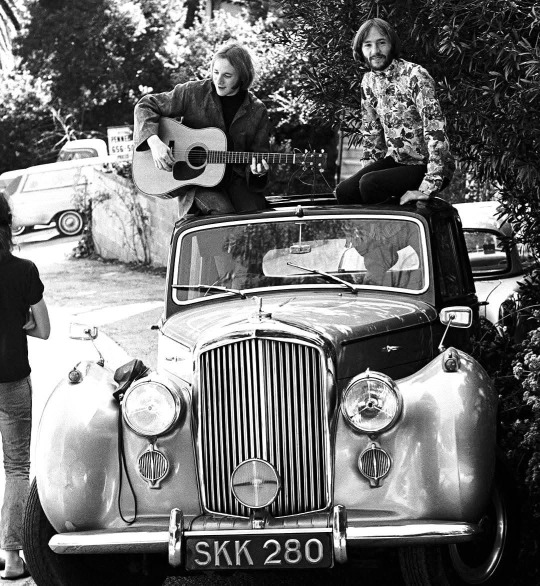

5 notes
·
View notes
Text

HAPPY BIRTHDAY to the fabulous saxophonist Aviva Maloney. Starting in the 80s, she was very visible as a side-woman for The Monkees + solo Davy Jones and Peter Tork. I’m blessed to have performed with her many times; she’s always professional and supportive, and I’m happy to count her as my good friend. She also released an acclaimed solo album, REED MY MIND, a smooth jazz project backed with members of The Monkees road band, Pablo Cruise, Starship and other high caliber musicians (REED MY MIND is on iTunes and Amazon https://www.amazon.com/Reed-My-Mind-Aviva/dp/B003QLE96Q). Aviva has also performed with Marty Balin, Big Brother & The Holding Company, and Craig Chaquico, and she’s still performing around her home base in the greater Los Angeles area. Here she is on a Davy Jones song “My Love.” https://www.youtube.com/watch?v=UVAX_iK8NVE Meanwhile, HB AM—thank you for the years of joy you’ve given to us.
#aviva #avivamaloney #reed #davyjones #petertork #monkees #martybalin #starship #craigchaquico #saxophone #pablocruise #johnnyjblair #birthday
#johnny j blair#music#pop rock#monkees#davy jones#Aviva#Aviva Maloney#reed#Peter Tork#Marty Balin#Starship#saxophone#Pablo Cruise#birthday
3 notes
·
View notes
Photo

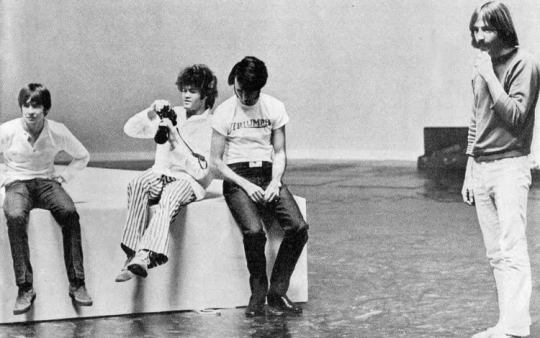
During the filming of 33 ⅓ Revolutions Per Monkee, November 1968.
Peter leaving The Monkees, post 3 of 3.
“I just basically think that I wasn’t feeling a part of it anymore already by that point, I’d already felt like I was odd man out, and of course I quit almost immediately thereafter.” - Peter Tork, Headquarters radio, 1989
“I’d always had deep doubts, ever since the session for ‘Last Train To Clarksville.’ I walked in there with my guitar and Tommy Boyce and Bobby Hart looked at me with derision and scorn, like, ‘Guitar in your hand, you fool!’ That was the end of it for me. Right there I was done with The Monkees in large measure. I struggled against it with some success at one point. But after Headquarters nobody wanted to be a recording group anymore. I did what I could, but I didn’t feel like there was any reason for me to be there anymore. I wanted to be in a rock group.” - Peter Tork, Head 1994 liner notes
“While we were making the TV Special, knowing I was not going to be there any longer, I just thought to myself — I don’t have to worry about this thing — and I just let everything slide off my back.” - Peter Tork, NME, January 25, 1969
“We never thought of replacing him — there’s only one Peter Tork in the world.” - Michael Nesmith, Melody Maker, March 1, 1969
Q: “So, when you left, did you want to be known as the former Monkee or did you want to erase that part of your past —” Peter Tork: “I tried to erase it.” Q: “— and start anew.” PT: “I tried to erase it completely.” Q: “How do you do that?” PT: “Well, you just don’t do anything connected with it, just absolutely refuse to have anything to do with it.” - NPR, June 1983 (x)
“Headquarters was by far the best album in the sense that it was us. It was honest, it was pure, and we had a great time. Peter says that the reason he quit was because after we did this album, we decided we weren’t going to be a group anymore. It broke his heart, because Headquarters was the whole reason why he’d become one of The Monkees.” - Micky Dolenz, Headquarters 1995 liner notes
“[Micky] did a great job [drumming] on Headquarters. [But] he wasn’t going to do it again, and there was nothing you could do [to change his mind]. We had to go back in the studio. He said, ‘Peter, you can’t go back.’ Eddie Hoh did the drumming [on Pisces, Aquarius, Capricorn & Jones Ltd., save for ‘Cuddly Toy’]. Chip [Douglas] got him ‘cause he could read [music]. The result is that you get directed stuff, there’s no group interaction, which is why I wanted the group to be on the album in the first place. You listen to Beatle albums and one of the things that makes them great is that they have found ways to use who they have to get what they want without asking anyone to do what they couldn’t do. That’s what makes group music happen. That’s all I ever hoped for, and I had it for like a minute on Headquarters.” - Peter Tork, Pisces, Aquarius, Capricorn and Jones Ltd. 2007 liner notes
“[Peter] admits he harbored a lot of bitterness for many years. The main bone of contention was the TV show’s producers insistence that the band members not play their own instruments. [...] ‘I was devastated at first. I originally approached The Monkees in terms of my own desire to be part of a genuine pop-rock music group. I felt like it was a professional slight to me. Like I was being excluded.’” - The Bellingham Herald, August 5, 1996
“Peter wasn’t satisfied musically [with The Monkees]. He’d been led to believe he could express himself musically. He was frustrated.” - Davy Jones, News-Press, May 14, 1977
“‘I was mostly interested in the Monkees as a musical entity,’ Thorkelson commented. ‘We didn’t fully realize that potential, and I felt ripped off.’” - The Bowling Green News Revue, May 24, 1979 (x)
“We’re all sorry to lose Peter but it was all very friendly and I personally can understand what is going through his mind, He’s a clever guy, you know, and he gets kinda restless sometimes. You should see the books he plows through… real deep stuff with words about a mile long.” - Davy Jones, Monkees Monthly, February 1969
“Peter and I were the bulk of the playing ability because we were musicians. But when Peter left it rather unnerved Davy and [Micky] — and I changed my mind [about quitting]. After all, the personal appearances were pretty well satisfying, the music was fun, and the whole thing was fairly lucrative. And Davy and [Micky] left alone would have been in real trouble.” - Michael Nesmith, Disc & Music Echo, September 19, 1970
“If the truth be known, the day Peter quit was probably the happiest day of Mike’s life. They’d never really gotten along, right from day one. Mike had always perceived of Peter as untenable, and they’d always been adversarial, if not outright combative. Finally he was out of the way. Now Mike could get on with doing what he had always wanted to do, make the Monkees his group. And I was happy to go along. I respected Mike and his music and was quite prepared to go along for the ride. [...] I saw Peter’s abdication as a minor setback at most. Basically, I think the three of us really thought that would be able to go on, just as we had before, and nobody would even notice there were only three people on stage instead of four — after all Peter didn’t sing on many of the songs anyway. How naive. […] I suppose it depends on whom you talk to, but as far as I’m concerned, the day Peter quit was the day the music died (apologies to Don McLean).” - Micky Dolenz, I’m A Believer: My Life of Monkees, Music, And Madness (1993)
#Peter Tork#Tork quotes#60s Tork#80s Tork#1968#33 ⅓ Revolutions Per Monkee#The Monkees#Monkees#Micky Dolenz#Davy Jones#Michael Nesmith#long read#Peter deserved better#Release#Peter Tork and/or Release#1969#1983#1987#1989#1993#1994#Headquarters#can you queue it
71 notes
·
View notes
Note
Hi, could you explain what is the torksmith watch all about?
well in late 1968 not long after head was released and while the monkees were filming their flop tv special "33 1/3 revolutions per monkee", peter tork decided to quit the band. for reasons thus far unknown, the other 3 monkees gave him a parting gift of a pocket watch with the engraving "to peter, from the guys down at work. 11.27.1968". and it cost 6 dollars and 95 cents (which is around 62 dollars now). the reason why it's called the torksmith watch is because it's commonly understood that the watch was mostly mike's idea, and because of the cheapness of the watch (relative cheapness, and also "the guys all pitched in") no one can understand if it was meant as a joke or not, and if it was a joke was peter in on the joke, and was mike behind the joke in a mean way or in an attempt to make light of the situation/make amends with peter last minute, and if it was sincere in that way then did micky and davy know about that aspect of it... a lot of mystery shrouding the watch and it's crazy because peter kept it for the rest of his life, to the point where he still had it when andrew sandoval was compiling the monkees day-by-day story in the early 2000s and, I quote, "proudly displayed" it to him. it's crazy!!! and a couple years ago tumblr users lesbianmikenesmith and lesbianpetertork did a little survey on the monkee community's views on the torksmith watch and the general consensus is that it all comes down to mike and peter's fucked up relationship and DID PETER KNOW IT WAS A JOKE OR NOT!!!!!!!!
also here are some posts for further reading: this one, and this one, and this one for sure.
and of course, the watch day hand covers bruise edit, and the torksmith mamma mia edit. thank you lesbianmikenesmith.
#thank you so much for coming to me with this question i sincerely miss overexplaining monkees lore#anon#📬
78 notes
·
View notes
Text
Head Film Essay (1968)
Directed by Bob Rafelson and Jack Nicholson
Written by Jacob Christopher
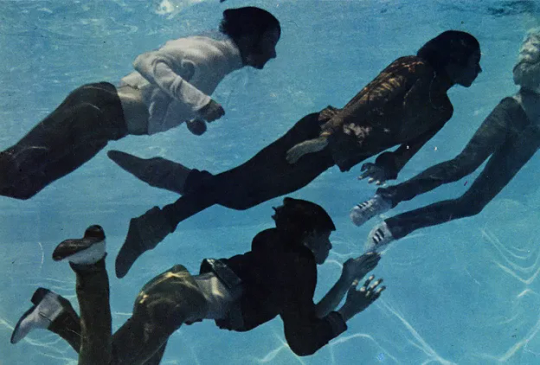
“Of course Head is an utterly and totally fragmented film. Among other reasons for making it was that I thought I would never get to make another movie, so I might as well make 50 to start out with and put them all in the same feature." - Bob Rafelson
Head is a fun film, not because of it's plot, but it's absence of any sensical story direction at all. Released with it's corresponding album, the film utilizes the talents of the boy band The Monkees traversing through an obstacle of hijinks on their movie set, searching for sense trapped in a surrealist inspired story progression. Taking a satirical tongue and cheek approach to it's humor and messaging. Expressed through it's dialogue and formalistic style of cinematography, often the point is played vaguely and subtly due to it's delivery. Exemplified as a pariah for the time, The Monkees, Hollywood TV's answer to The Beetles. Were a Family TV show tied with music production, blurring the lines between actors and musicians. From mid-sixties to the year of 1967, The Monkees group of boys, Micky Dolenz, Peter Tork, Davy Jones, Michael Nesmith, soared towards the top of American notoriety and attention, before the inevitable downfall that waits for most manufactured trends.
In a glory of self destruction, the creator of The Monkees Bob Rafelson and the boys of the band had set to create a film as if it were their last opportunity to throw every editing tool and story beat, accumulating into a fun mess of a send off for the band. Ultimately flopping at the box office in extortionary fashion, only garnering $16,111 in the box office. The ticket sales in comparison to it's budget of $750,000 clearly show the disparity of the investment's outcome.
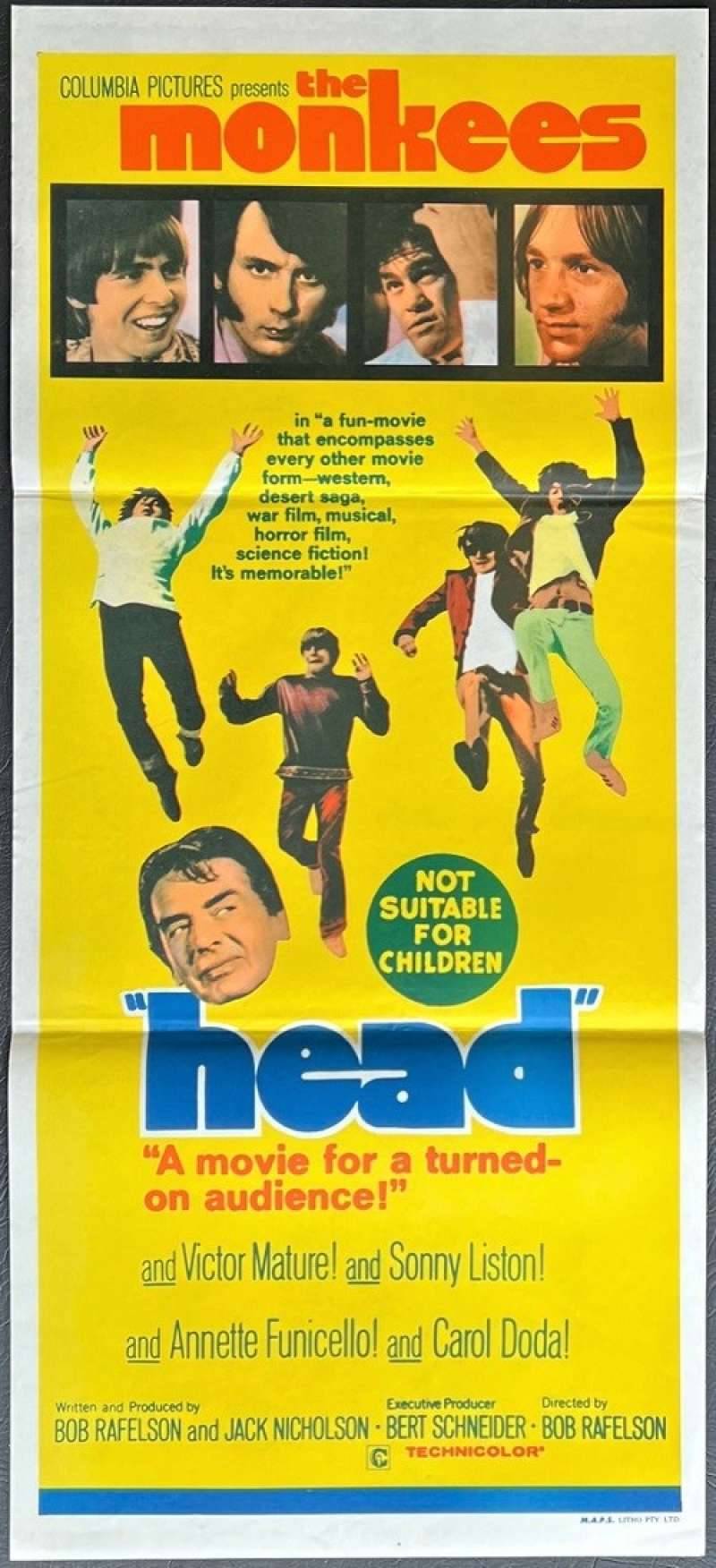
Reception during the airing of the movie was very mixed if not mostly negative, To quote a review of the time by Renata Alder of The New York Times: Head "might be a film to see if you have been smoking grass, or if you like to scream at the Monkees, or if you are interested in what interests drifting heads and hysterical high-school girls." Alienating their audience of families due to the un-child friendly subject matters shown, while also unable to reach an adult audience due to the already concrete notions of The Monkees tween image. Despite the poor reception of the film upon release a cult following for the film had managed to be birthed from the film's obscurity and ambitious story telling.
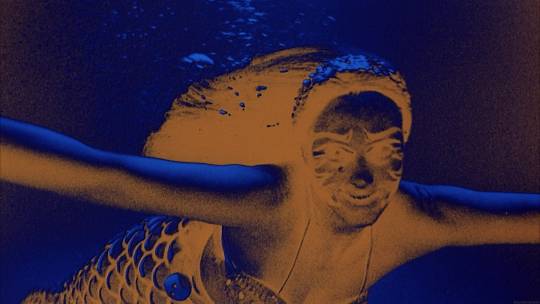
The film is the lease bit conventional in everything it does, exemplified from it's camera cuts, video editing and especially the lack of coherent story progression. In the beginning sequences of the movie Mickey Dolenz jumps from a bridge and into the water, where psychedelics sequences of inverted colors and high contrasting visuals of mermaids swimming around his drowning body, transitioning backwards in time to the band being kissed by a woman, who rates all of the members to be about the same quality of partner. Where things become harder to describe is the plot of the film, or as many put it, the lack of a plot at all. However there is more to be dissected than just face value, or even what the film just shows you at all. Most of what makes Head (1968) interesting isn't just the summer of love aesthetic brought by the hippie movement, but also the martyr philosophy the the band and directors try to make of the novelty.
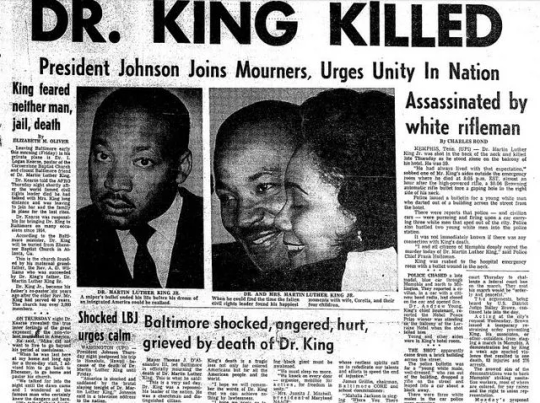

(Top Image: Article of MLK's assassination)
(Bottom Image: Moments before the execution of Nguyễn Văn Lém)
To emphasize the tumultuous times of the late sixties, Martin Luther King had unfortunately been assassinated in Memphis, and war waged furious. The scene that had staked itself into my attention, forcing me to see this film as something more than just zany 60s sitcom antics. Is that of the execution of Nguyễn Văn Lém, a captive of south Vietnamese troops. A polarizing scene to include, especially regarding The Monkees previous audience of children and family orientated television. For many it can be deemed as none less than shock, but also play part of the messaging of the time. 1968, the Vietnam War curtained prevalent over many lives. In usage of the execution, the scene plays also as commentary on what America's television programming hid from it's audience, The Monkees used as a blanket of blissful ignorance, but not anymore. Unappreciated for it's time, Head (1968) has aged into a relic of the past to be appreciated by a newer audience in retrospective perspective.
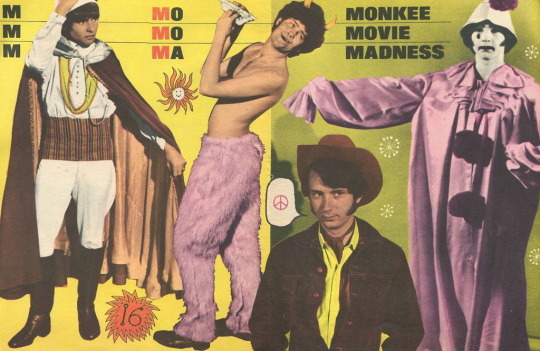
4 notes
·
View notes
Video
The Monkees, Annette Funicello, Victor Mature | "HEAD" (1968) | Full Mov...
The Monkees are known for zany antics and HEAD is no exception. Head is a 1968 American satirical musical adventure film written and produced by Jack Nicholson and Bob Rafelson, directed by Rafelson, starring television rock group The Monkees (Davy Jones, Peter Tork, Micky Dolenz, and Michael Nesmith). The film featured Victor Mature as "The Big Victor" and cameo appearances by Nicholson, Teri Garr, Carol Doda, Annette Funicello, Frank Zappa, Sonny Liston, Timothy Carey, Percy Helton, and Ray Nitschke., Also appearing on screen in brief non-speaking parts are Dennis Hopper and film choreographer Toni Basil. The film's music included contributions by Carole King and Harry Nilsson. Jack Nicholson compiled the soundtrack album, which approximates the flow of the movie and includes large portions of the dialogue. HEAD was not well received but has gained more and more popularity due to multiple re-releases Head has developed a cult following. Leonard Maltin describes it as "delightfully plotless" and "well worth seeing", giving the film 3 out of 4 stars. You are invited to join the channel so that Mr. P can notify you when new videos are uploaded, https://www.youtube.com/@nrpsmovieclassics
2 notes
·
View notes
Text


False fact:
Aside from acting, SCP-173-J also was the fifth member of the Monkees, where it played instruments such as the [REDACTED]. Sometimes the Hard-to-Destroy Repitile (SCP-682) would also make appearances with it also as a musician and actor. It even recorded an album of sea shanties with Davy Jones which is still sought after more than 50 years, despite its rarity.
These images are some surviving stills of SCP-173-J as a Monkee which were discovered in a small antiques shop in [__]. The first image depicts SCP-173-J helping Peter Tork eat cereals while performing a medical procedure on him with Micky Dolenz and Mike Nesmith, due to the fact Davy Jones was absent with the flu. The second image depicts it dragging a bed around a street with the Monkees. It was believed SCP-682 followed them around during the shooting of the footage.
There was also an ad focused on the subject where it would "snap" three of its human bandmates' heads along with SCP-682's while they were eating cereals for breakfast, with Micky Dolenz playing the role of a researcher, Dr. Dolenz, PhD., experimenting on an anomalous cereal brand who ended up screaming as the subject chased him around at the end of the ad while he carried a cereal bowl spilling all of its contents. It should be noted that the other three men were dressed in orange jumpsuits similar to that of SCP D-Class personnel. This is the only surviving piece of footage under the custody of Site-17 Director Dr. C. Gears and can be viewed with his permission on a bimonthly basis. Any attempts to pirate, leak, or release the ad to the public may be met with the death penalty and the subsequent deletion of the file.
#my edits#fake facts#scp 173#scp-173-j#the monkees#peanut#scp foundation#except davy jones#he loved it so much#crunch#ft. scp-682
2 notes
·
View notes
Text
Feature LP / The Monkees - Instant Replay (1969) / 12pm ET / 9-30-24
Instant Replay is the seventh studio album by the American pop rock band the Monkees, released February 15, 1969, by Colgems Records. Issued 11 months after the cancellation of the group’s NBC television series, it is also the first album released after Peter Tork left the group and the only album of the original nine studio albums that does not include any songs featured in the TV…

View On WordPress
0 notes